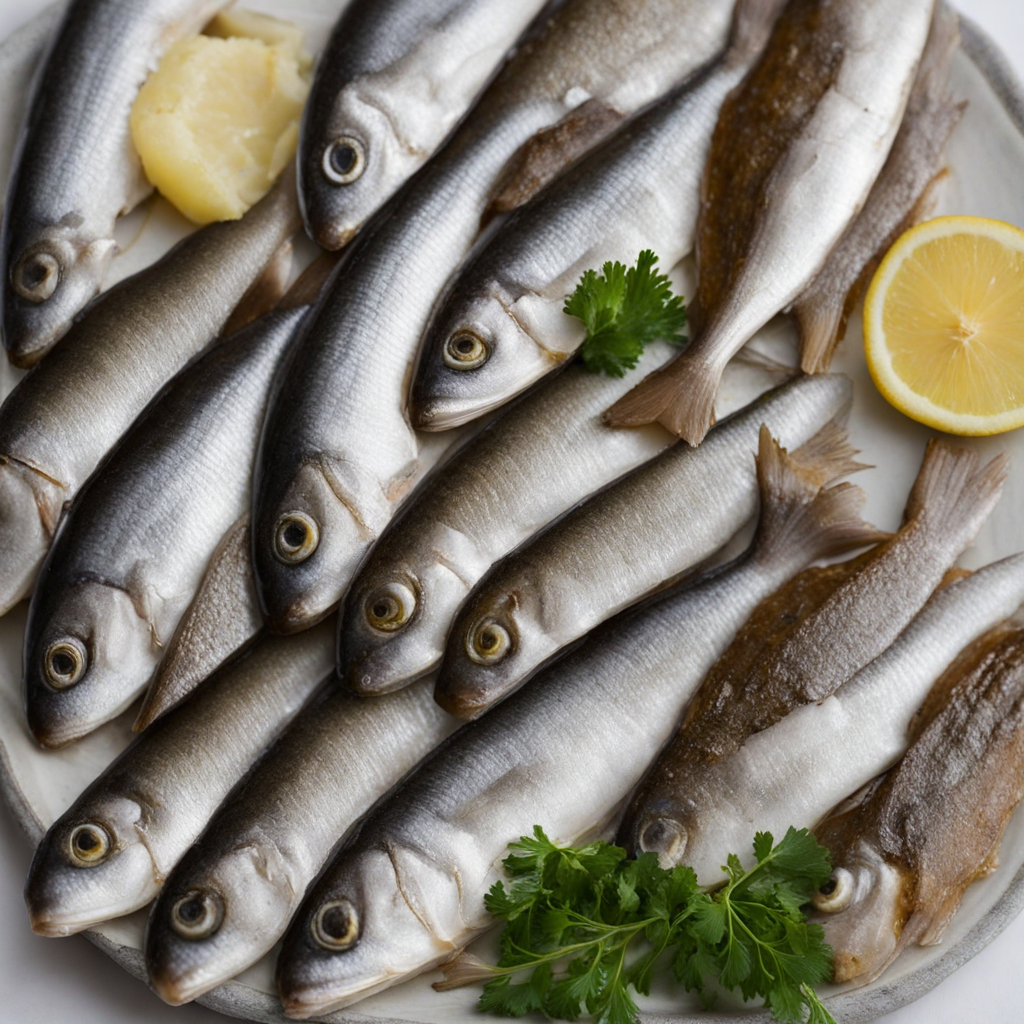Swedish Egg Cheese
Swedish Egg Cheese, known as 'Äggost' in Sweden, is a unique dairy product that beautifully combines the richness of eggs with the creamy texture of cheese. Traditionally made from a mixture of eggs, cream, and a touch of rennet, this delicacy is gently cooked until it sets into a soft, custard-like consistency. The end result is a delightful cheese that is both light and airy, offering a subtle sweetness that distinguishes it from more common cheese varieties. Its pale yellow hue and smooth surface make it visually appealing, inviting you to take that first bite. The flavor profile of Swedish Egg Cheese is quite mild, making it a versatile ingredient in both sweet and savory dishes. When enjoyed on its own, it has a delicate taste that can be enhanced with a drizzle of honey or a sprinkle of cinnamon for a sweet treat. Alternatively, it pairs exceptionally well with savory toppings such as smoked salmon, fresh herbs, or a dollop of tangy mustard. This adaptability allows for endless culinary creativity, whether it's served as a breakfast option, a brunch centerpiece, or a delightful appetizer. Traditionally enjoyed in Sweden, Äggost is often found at festive gatherings and special occasions, reflecting its cultural significance. It is typically sliced and served cold, allowing its unique texture to shine through. For those adventurous enough to explore new flavors, Swedish Egg Cheese offers a delightful departure from the ordinary, introducing a taste of Swedish tradition and innovation. Each bite is a gentle reminder of the beauty of simple ingredients transformed into something extraordinary.
How It Became This Dish
The History of Äggost: Sweden's Unique Egg Cheese #### Origins Äggost, a traditional Swedish delicacy, translates to “egg cheese.” Despite its name, it is not a cheese in the conventional sense but rather a custard-like dairy product that has its roots deeply embedded in Swedish culinary history. The origins of Äggost can be traced back to the rural communities of Sweden, particularly in the northern regions, where dairy farming was a significant part of daily life. The earliest references to Äggost date back to the 16th century, when it was primarily made by farmers as a way to utilize surplus milk and eggs, especially during the harsh winters when fresh produce was scarce. The recipe varied from one household to another, often depending on the availability of ingredients and local customs. The basic components of Äggost are simple: milk, eggs, cream, and sugar, sometimes seasoned with spices such as cardamom or vanilla. #### Cultural Significance Äggost holds a special place in Swedish culture, often associated with family gatherings, celebrations, and traditional feasts. Its unique preparation method reflects the resourcefulness of rural communities, where nothing went to waste. The dish was often served during festive occasions like Midsummer, Christmas, or Easter, symbolizing abundance and the joy of coming together. In the northern regions of Sweden, Äggost was not only a culinary delight but also a cultural marker. It represented the ingenuity of the Sami people and other ethnic groups who inhabited these areas, showcasing how traditional knowledge was passed down through generations. It was common for families to have their own variations of the recipe, turning Äggost into a family heirloom of sorts, with each version carrying its own story and significance. Moreover, Äggost became an emblem of Swedish identity, especially as the country sought to preserve its culinary heritage in the face of globalization. During the 20th century, as Sweden began to modernize, there was a renewed interest in traditional foods. Äggost found its way into cookbooks, and culinary festivals began to showcase this regional specialty, helping it gain a broader appreciation. #### Development Over Time As the centuries progressed, the preparation and presentation of Äggost evolved. Initially made in large batches in a communal setting, with the entire family contributing to the process, it began to be produced on a smaller scale as families became more nuclear. The introduction of modern kitchen appliances simplified the preparation, allowing for greater consistency in texture and flavor. In the late 19th and early 20th centuries, as urbanization took hold in Sweden, many rural inhabitants moved to cities for work. This migration led to a decline in traditional food practices, including the making of Äggost. However, the dish was not forgotten; instead, it became a nostalgic reminder of home for many Swedes who had left their rural roots behind. This nostalgia played a significant role in reviving interest in traditional foods, including Äggost, in the latter half of the 20th century. The 1980s and 1990s marked a turning point for Äggost, as food enthusiasts and chefs began to rediscover and celebrate traditional Swedish cuisine. Cookbooks and television shows featuring Swedish culinary traditions brought Äggost back into the public eye. Chefs started to experiment with the dish, offering modern interpretations while still respecting its historical roots. This revival was part of a broader movement across Scandinavia, where there was a renewed focus on local, sustainable ingredients and traditional cooking methods. #### Contemporary Äggost Today, Äggost is celebrated as a regional specialty of Sweden, particularly in areas like Bohuslän and Dalarna. It is often featured in artisan markets and local food festivals, where visitors can sample this unique dish. Many contemporary recipes also include variations such as fruit toppings, jams, and even savory versions with herbs and spices, showcasing the adaptability of this traditional food. Modern Swedish chefs are now using Äggost as a canvas for creativity. Some have begun pairing it with contemporary ingredients like berries or nuts, while others serve it alongside artisanal bread or as part of a charcuterie board. This fusion of old and new has helped Äggost to maintain its relevance in today’s culinary landscape, appealing to both traditionalists and adventurous eaters alike. Furthermore, the global interest in Swedish cuisine, spurred by the New Nordic Food movement, has brought international attention to Äggost. As more people become interested in traditional foods and sustainable practices, Äggost has emerged as a symbol of Sweden’s rich culinary heritage that is both delicious and deeply rooted in history. #### Conclusion Äggost is more than just a dish; it is a testament to Sweden's agricultural heritage, cultural identity, and culinary evolution. From its humble beginnings as a way to utilize surplus ingredients to its status as a cherished traditional food, Äggost represents the resilience of rural communities and the importance of preserving culinary traditions. As it continues to evolve and adapt to modern tastes, Äggost remains a beloved symbol of Swedish culture, celebrating the connection between people, food, and the land. In a world increasingly focused on fast food and convenience, the story of Äggost serves as a reminder of the rich tapestry woven from the threads of history, culture, and community—a dish that not only nourishes the body but also the spirit.
You may like
Discover local flavors from Sweden







